Djordje Stojanovic, University of Melbourne
Milan Katic, 4of7 Architecture
Student assistants: Ananya Khujneri, Zhexing Huang, Samantha Yu-Hsuan Tseng, Chandavinel Ath + James Urlini, University of Melbourne
Irregular and wild in appearance, this experimental structure is a result of a rule-based assembly method and a precise digital modelling technique involving both geometric and material properties. It is a part of the study that investigates the role of algorithms in the creation of complex spatial systems, characterised by the ability to self-organise, grow and readjust. These and other properties of complex systems often found in nature amongst living things are continually attracting interest from architects and urban designers. Their understanding, at both practical and theoretical level, may hold significance for the creation of the built environment of the future. The impact of this study is in the domain of design experimentation and the development of innovative workflows. The significance of this study is in understanding the behaviour of complex spatial systems as something physical, based on material performance and production of tangible prototypes. The complexity, i.e. the ability of the spatial system to readjust itself, is generated by the high number of components involved and reinforced further with their ability to change. Throughout the construction process, elastic material behaviour is essential as it allows initially identical construction components to change and thus enable the overall form to readjust itself and gain structural stability. Therefore, the experimentation is focusing on the parallel application of two algorithmic protocols to capture the correlation between geometric properties and material performance. The investigation is based on a sequence of prototypes, with several iterations produced up to date. The prototype Inconsistencies v0.6 is custom built for the Future Prototyping Exhibition, with the application of knowledge, computational tools and assembly techniques developed through the sequence past experiments.
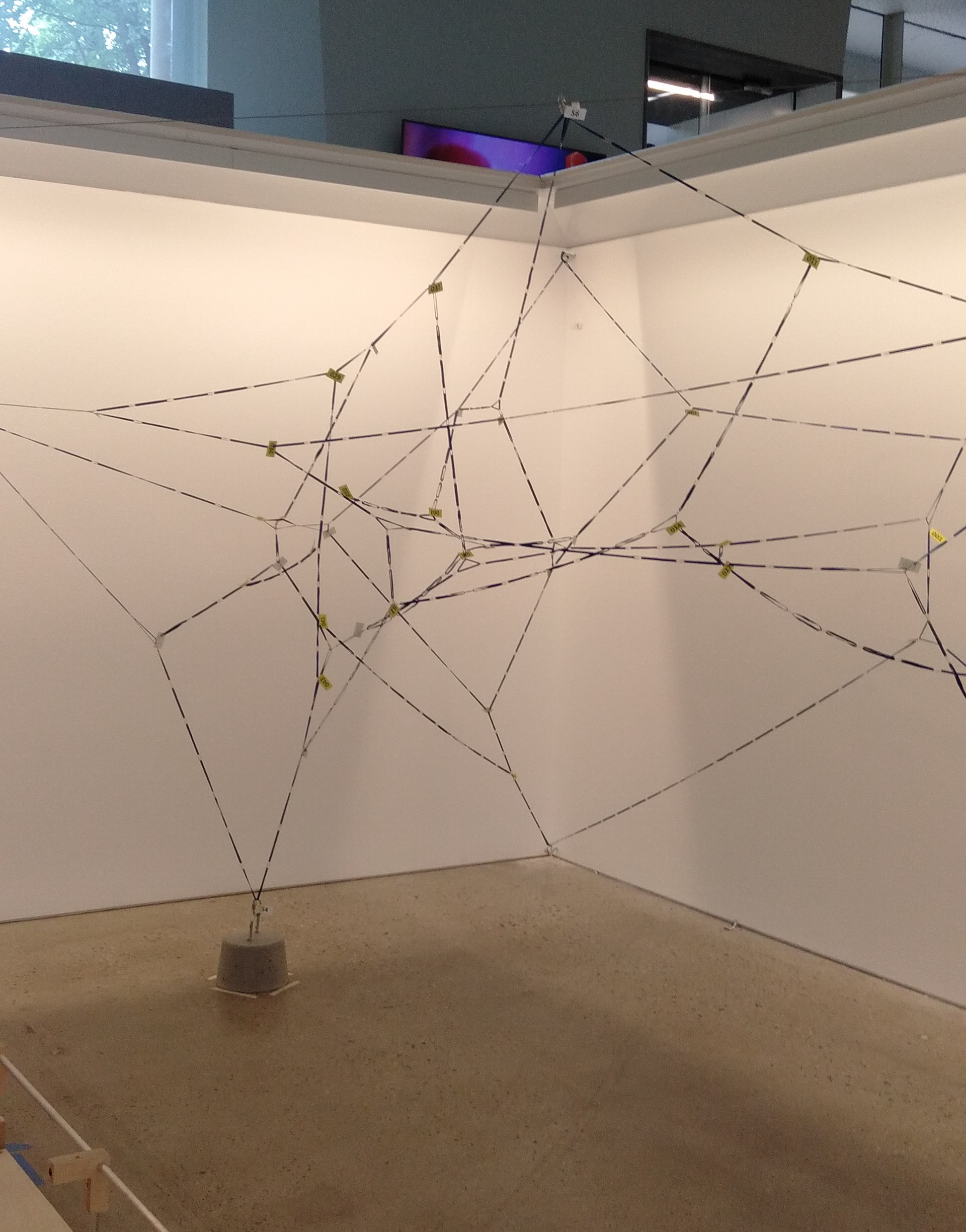
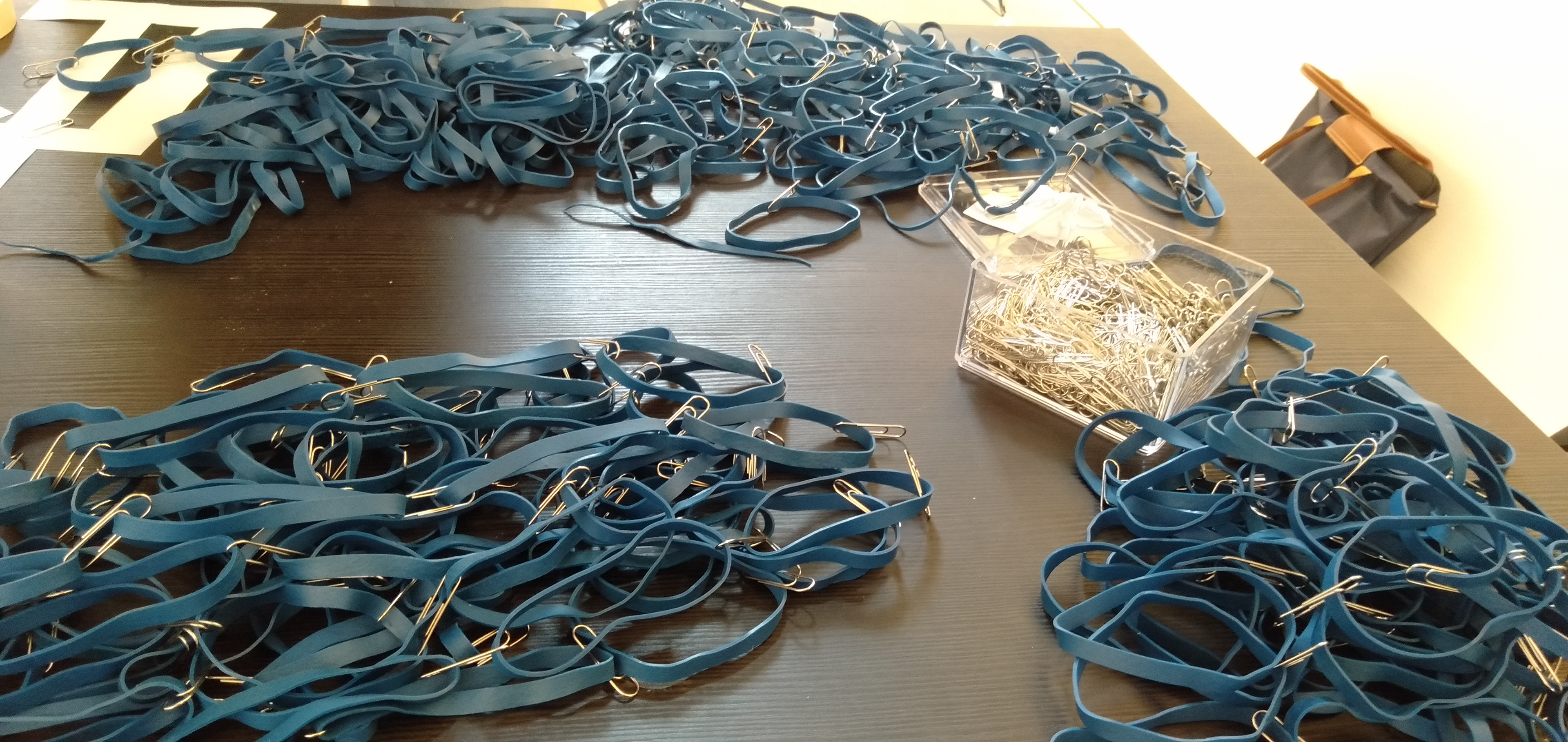
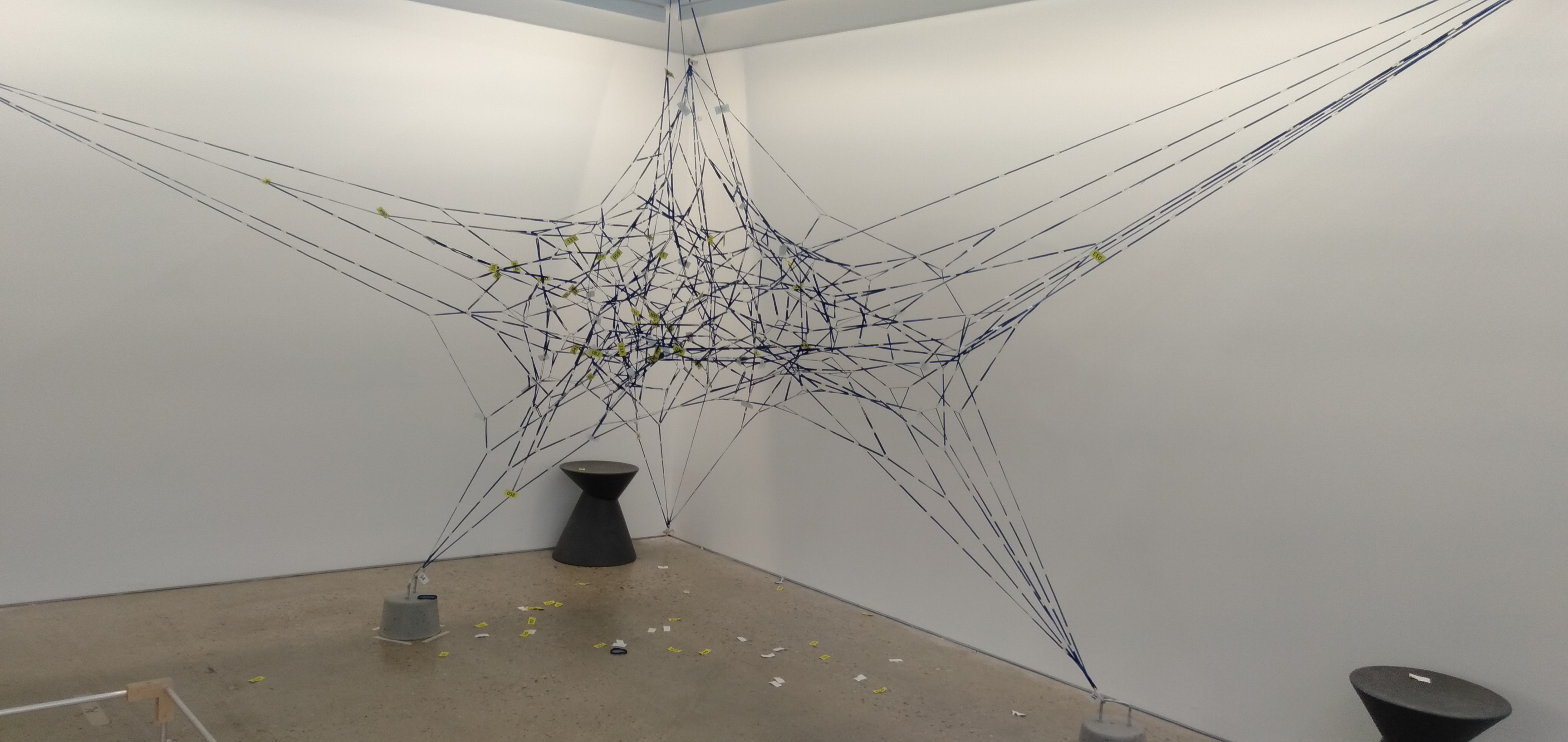
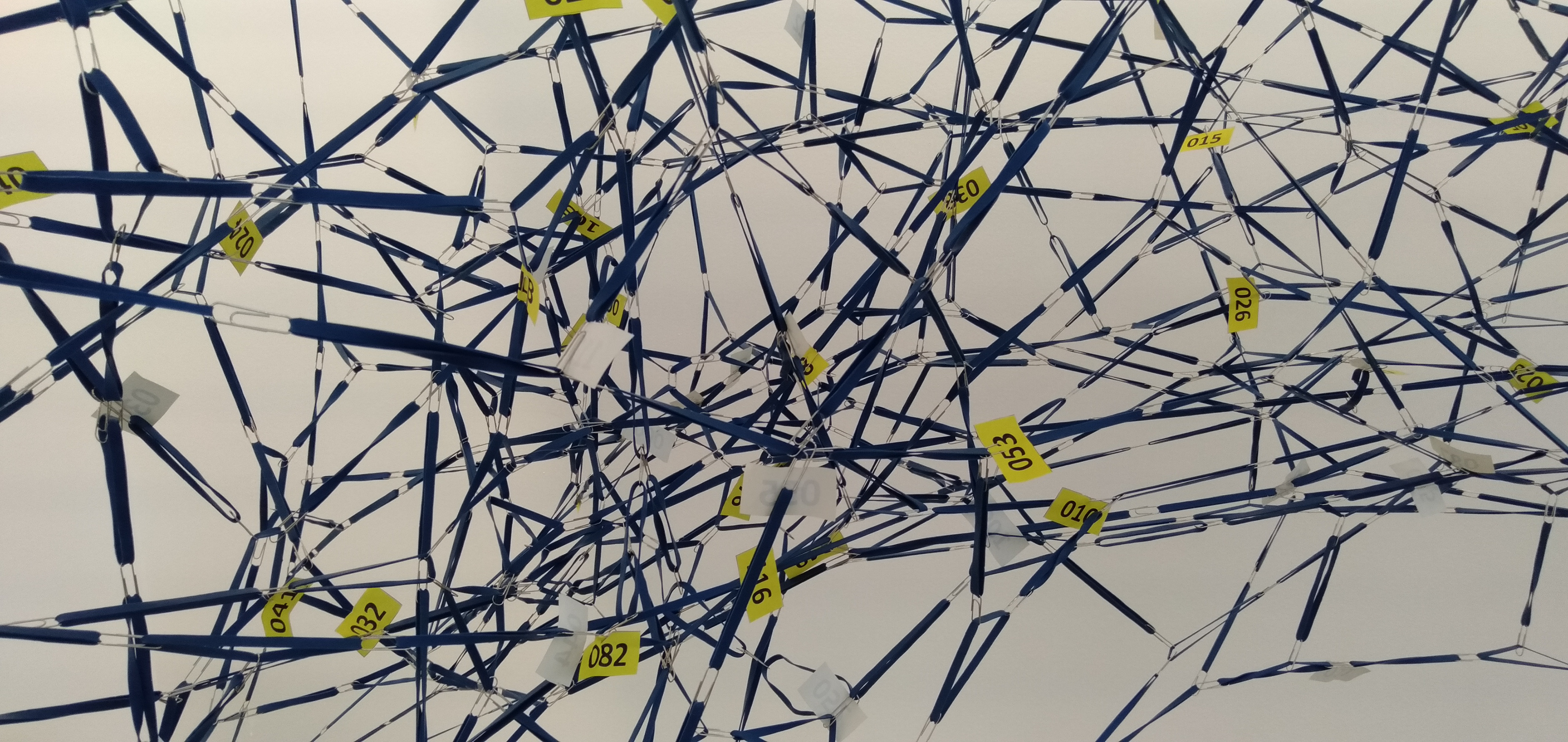
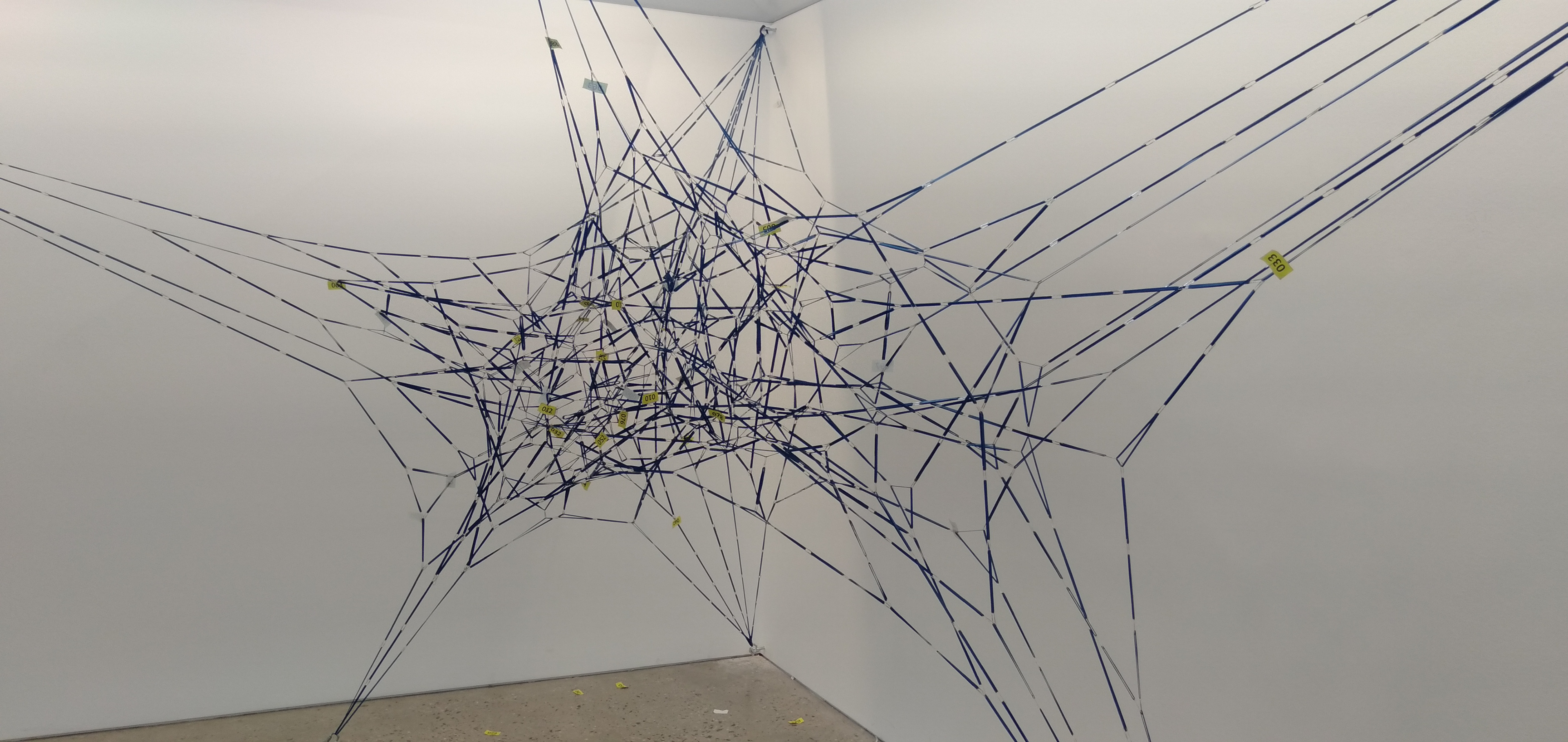
Note: This installation was a piece of Exhibition at the Melbourne School of Design (University of Melbourne) and is entirely credited to Djordje Stojanovic and Milan Katic. The project can be found through the following link:
https://msd.unimelb.edu.au/future-protoyping-2020/exhibition/inconsistencies-v0.6